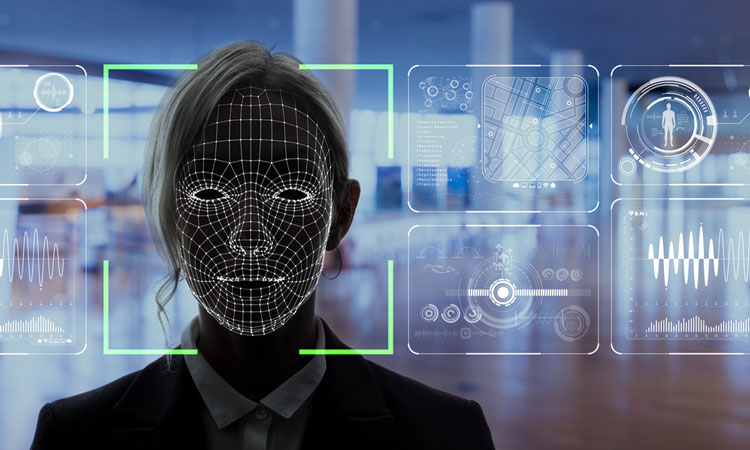Technology: Facial Recognition
Facial recognition is a process of identifying human face using technology known as biometrics. This technology is standard at airports, schools, companies’ building law enforcement departments, to mention just a few. The biometrics maps the features and stores the data as a faceprint. The new technology captures both still images and a live video, and it uses an algorithm to compare the captured photos to the faceprint to authenticate an individual’s identity. This technology captures an individual’s features regardless of age, gender. However, partial or complete obscuration of the subject’s face affects the reliability of the system. It is well suited to analyze features, match them with information stored in the database and identify who you are. Since the face of individual changes with time and circumstances, unlike the fingerprint, which remains the same during a person’s life, facial recognition should put the following factors into consideration: age, plastic surgery, cosmetics, effects of drug abuse or smoking and pose of the subject. How facial recognition works The following steps illustrate how the system works: 1. Face Detection The camera detects and recognizes a face either alone or in a crowd. The subject is only required to look directly at the camera. 2. Face Analysis A photo of the face is captured and analyzed. An algorithm may analyze the nodal points such as position, size or shape of the eyes, nose, cheekbone and jaw. Nodal points make up each face, and each human face contains 30 nodal points. 3. Conversion The captured image gets transformed from the analogue form into a set of digital information based on the person’s facial features. 4. Face match Your face’s digital information is matched with the one on the database to determine if the two are similar. Benefits of facial identification Facial recognition brings numerous benefits to a country, an individual or business premises. 1. Enhanced security The system makes it easy to track down thieves, burglars and trespassers. It also helps the government to trace terrorists and other criminals. 2 . Easy integration The system is relatively easy to integrate, making it a 100 per cent win-win application. There is no need for extra funds to use in the integration process because the images’ features are compatible with the majority stored in the database. 3. Less processing time It grants instant recognition of the face, which makes the verification process efficient. 4. Automate the identification The result is not easily interfered with, given instant authentification with infrared cameras and 3D facial recognition technology, boosting accuracy. 5. Since there is no physical contact between an individual with the device, the machine is not likely to stop functioning due to dirt like in fingerprint biometric. Application of facial recognition The use of technology is rapidly spreading globally, especially in China, the US, among many other countries. Different industries, including the health sector, construction and law enforcement, apply facial biometrics. Let us take a look at how different sectors are leveraging this new technology for their gain. 1. Schools Facial recognition is being used in schools to warn against threats from an individual like terrorists, sex offenders. The technology is also used in classrooms to record attendance. 2. Airport The technology is used to monitor movement within the airports and identify people who have overstayed their visas or are under criminal investigation. Airlines use the system to help people check bags, check-into flights or board planes faster. 3. Retails and shops Retail owners have employed the use of face scanning to identify suspicious characters and potential shoplifters. 4. Unlock phones Face ID technology provided by Apple’s iPhone X allows users to unlock their phones with a faceprint mapped by the phone’s camera. 5. Health The health sector uses it to identify illness, track a patient’s medication use more accurately, and pain management. 6. Payment Many stores and ATMs are using facial recognition as a mode of payment. For instance, MasterCard came up with a MasterCard identity check to confirm their transactions using cameras. Biometrics could finally replace PINs. 7. Social Media Facebook uses facial recognition technology to tag individuals in photographs, and this feature helps people find photos where they appear. It further suggests when to tag particular people in photos. 8. Track attendance at church Churches are using new technology to identify regular and non-regular congregants. Concerns about facial recognition Like any other inventions, biometric technology comes with criticisms. Face rapid scanning growth has triggered a heated debate with people expressing the following issues with the technology: (a) Ownership There is a lack of consent to the recording, analyzing and storing images in the database. (b) Error identification Sometimes it is not able to match faceprints with the database. In poor images, facial obstruction or lack of information in the database, the error usually occurs. After its American Civil Liberties Union test, Amazon asked the US government for intervention on the use of biometrics after its Rekognition system, wrongly identified 28 members of congress as arrestees. (c) Privacy The technology can track you without your knowledge hence making people uneasy. Due to significant data breaches, people fear embracing facial recognition for fear of personal information exposure. Despite all the negative issues that come with biometric technology, it is fair to argue that its advantages outweigh the disadvantages. Undoubtedly, the new technology makes life easier and safer. Let’s go for biometrics! Photo: International airport review

